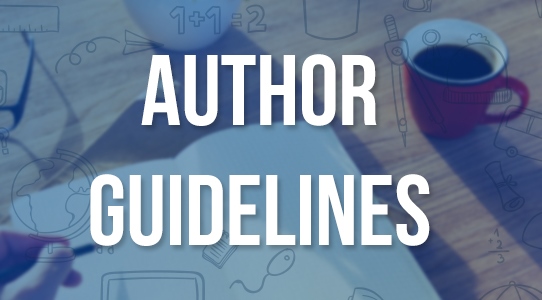Digital Mental Health Innovation: Effectiveness of Qolbu Care App in Reducing Anxiety and Improving Resilience among Adolescents in Disaster-Prone Areas
DOI:
https://doi.org/10.37680/amalee.v6i2.7944Keywords:
Anxiety, Digital Application, Qolbu Care, ResilienceAbstract
High levels of anxiety and low resilience remain common psychological challenges faced by individuals in coping with life stressors. Technology-based approaches, such as mental health applications, offer innovative and easily accessible solutions, yet remain under-researched in Indonesia. This study aims to analyze the Qolbu Care application’s effectiveness on respondents' anxiety and resilience levels. The research employed a quasi-experimental design with a one-group pretest–posttest approach involving 90 respondents. The intervention was administered over eight weeks using the Qolbu Care application. Standardized anxiety and resilience questionnaires were used as research instruments. Data were analyzed using a paired t-test. The analysis revealed a statistically significant reduction in anxiety levels (mean = –16.45; SD = 8.12; SE = 1.05; p = 0.0001), as well as a statistically significant increase in resilience (mean = 11.40; SD = 6.85; SE = 0.98; p = 0.0001). The Qolbu Care application has proven effective in reducing anxiety and enhancing resilience among respondents. These findings affirm that digital-based interventions can be an innovative alternative for psychosocial support within nursing practice.
References
Contrada, R. J., & Baum, A. (Eds.). (2011). The handbook of stress science: Biology, psychology, and health. Springer Publishing Company. https://books.google.co.id/books/about/The_Handbook_of_Stress_Science.html?id=EXVlk8pnEKIC
Etkin, A., Büchel, C., & Gross, J. J. (2015). The neural bases of emotion regulation. Nature Reviews Neuroscience, 16(11), 693–700. https://doi.org/10.1038/nrn4044
Firth, J., Torous, J., Carney, R., Newby, J., Cosco, T. D., Christensen, H., & Sarris, J. (2018). Digital technologies in the treatment of anxiety: Recent innovations and future directions. Current Psychiatry Reports, 20(6), 44. https://doi.org/10.1007/s11920-018-0910-2
Flett, J. A. M., Hayne, H., Riordan, B. C., Thompson, L. M., & Conner, T. S. (2019). Mobile mindfulness meditation: A randomized controlled trial of the effect of two popular apps on mental health. Mindfulness, 10(5), 863–876. https://doi.org/10.1007/s12671-018-1050-9
Gaol, N. T. L. (2016). Teori stres: stimulus, respons, dan transaksional. Buletin Psikologi, 24(1), 1–11. https://doi.org/10.22146/bpsi.11224
Gu, J., Miller, C. B., Henry, A. L., Espie, C. A., Davis, M. L., Stott, R., ... & Carl, J. R. (2020). Efficacy of digital cognitive behavioural therapy for symptoms of generalised anxiety disorder: A study protocol for a randomised controlled trial. Trials, 21(1), 357. https://doi.org/10.1186/s13063-020-4230-6
Hayatini, D. R., & Dimyati, D. (2020). Validity and reliability of the resilience scale for Islamic boarding school students. Humaniora, 11(3), 227–233. https://doi.org/10.21512/humaniora.v11i3.6693
Hidayah, N., Florensa, F., Seprian, D., Nisma, N., & Fathudin, Y. (2024). Efektivitas model terapi modalitas dan komplementer SEFT terhadap penurunan tingkat stres pasca bencana pada remaja penyintas gempa bumi di Ponpes Minhajul Karomah, Kabupaten Cianjur. Jurnal Pendidikan Tambusai, 8(1), 5397–5404. https://jptam.org/index.php/jptam/article/view/13234
Hidayah, N., & Jamil, N. (2024). Intervensi digital terapi SEFT terhadap gangguan kecemasan pada remaja pasca bencana banjir rob di pinggiran Sungai Kapuas wilayah kerja Puskesmas Tambelan Sampit. Sci-tech Journal, 3(3), 245–254. https://www.mes-bogor.com/journal/index.php/stj/article/view/640
McDowell, I. (2006). Measuring health: A guide to rating scales and questionnaires (3rd ed.). Oxford University Press. https://dl.icdst.org/pdfs/files3/8c0318d9be7ee1707543f1daca6510fd.pdf
Mohammadi, K., Mehralian, H. A., Abolhassani, S., & Kheiri, S. (2024). Effect of a program based on Roy’s adaptation model on coping skills of children of people with multiple sclerosis. Iranian Journal of Nursing and Midwifery Research, 29(3), 231–236. https://doi.org/10.4103/ijnmr.ijnmr_231_22
Nasution, T. H., Ropi, H., & Sitorus, R. E. (2013). Faktor-faktor yang berhubungan dengan manajemen diri pada pasien yang menjalani hemodialisis di ruang hemodialisis RSUP Dr. Hasan Sadikin Bandung. Jurnal Ilmu Keperawatan, 1(2), 162–168. https://repository.unpad.ac.id/server/api/core/bitstreams/25a13696-d27e-44d9-b14a-0a882583658f/content
Orosa-Duarte, Á., García-Campayo, J., Modrego-Alarcón, M., Navarro-Gil, M., & Montero-Marín, J. (2021). Mindfulness-based mobile app reduces anxiety and increases self-compassion in university students: A randomized controlled trial. Mindfulness, 12(6), 1362–1374. https://doi.org/10.1007/s12671-021-01602-9
Riboldi, I., Cavaleri, D., Calabrese, A., Capogrosso, C. A., Piacenti, S., Bartoli, F., ... & Carrà, G. (2023). Digital mental health interventions for anxiety and depressive symptoms in university students during the COVID-19 pandemic: A systematic review of randomized controlled trials. Revista de Psiquiatría y Salud Mental, 16(1), 47–58. https://doi.org/10.1016/j.rpsm.2022.06.001
Schäfer, S. K., von Boros, L., Schaubruch, L. M., Kunzler, A. M., Lindner, S., Koehler, F., ... & Tüscher, O. (2024). Digital interventions to promote psychological resilience: A systematic review and meta-analysis. NPJ Digital Medicine, 7(1), 30. https://doi.org/10.1038/s41746-024-01017-8
Setyowati, A., Chung, M. H., & Yusuf, A. (2019). Development of a self-report assessment tool for anxiety among adolescents: Indonesian version of the Zung Self-Rating Anxiety Scale. Journal of Public Health in Africa, 10(s1), 1172. https://doi.org/10.4081/jphia.2019.1172
Southwick, S. M., & Charney, D. S. (2012). The science of resilience: Implications for the prevention and treatment of depression. Science, 338(6103), 79–82. https://doi.org/10.1126/science.1222942
Syafrizaldi, S., Harahap, D. P., & Dalimunthe, H. A. (2023). Gambaran resiliensi pada remaja penyintas erupsi Gunung Sinabung, Kabupaten Karo. Jurnal Penelitian Pendidikan, Psikologi dan Kesehatan (J-P3K), 4(1), 31–37. https://jurnalp3k.com/index.php/J-P3K/article/view/202
Tang, Y. Y., Hölzel, B. K., & Posner, M. I. (2015). The neuroscience of mindfulness meditation. Nature Reviews Neuroscience, 16(4), 213–225. https://doi.org/10.1038/nrn3916
Venkatesan, A., Rahimi, L., Kaur, M., & Mosunic, C. (2020). Digital cognitive behavior therapy intervention for depression and anxiety: Retrospective study. JMIR Mental Health, 7(8), e21304. https://doi.org/10.2196/21304
Downloads
Published
How to Cite
Issue
Section
License
Copyright (c) 2025 Nurul Hidayah, Florensa, Nisma, Muhammad Luthfi, Yogasliana Fathudin

This work is licensed under a Creative Commons Attribution-ShareAlike 4.0 International License.
Authors who submit manuscript retain its copyright and grant Amalee right of first publication licensed under a Creative Commons Attribution-ShareAlike 4.0 International License (CC BY-SA 4.0) that allows others to access (search, read, download, and cite), share (copy and redistribute the material in any medium or format) and adapt (remix, transform, and build upon any material) the work for any lawful purpose, even commercially with an acknowledgement of the work's authorship and initial publication in Amalee: Indonesian Journal of Community Research and Engagement.













